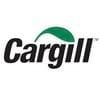Performance and egg quality of layers fed diets with low and high net energy: metabolisable energy ratio
Published: October 14, 2025
Source : S. BARZEGAR 1, S.-B.WU 1 and R.A.SWICK 1 / 1 School of Environmental and Rural Science, University of New England, Armidale NSW 2351.
Feed represents 65-75% of total production cost while energy represents approximately 50% of the diet cost. Apparent metabolisable energy corrected to zero nitrogen retention (AMEn) is most commonly used in poultry feed formulation. AMEn, however, does not consider energy lost during digestion as heat increment (HI). AMEn minus HI gives net energy (NE) which is energy available to the bird. An equation to predict net energy for production of ingredients for layers has been developed at UNE. Performance and egg quality were measured in hens fed diets with different levels of NE and NE:AMEn ratio formulated using the equation. The completely randomized study used 62 Hy-Line Brown laying hens of 44 weeks of age for 11 weeks. Two diets were fed to 31 replicates of individual birds, housed in single cages. The NE:AMEn, AMEn (MJ/kg), NE (MJ/kg), crude protein (CP) (g/kg), ether extract (EE)(g/kg) and added canola oil (g/kg) of the diets were, respectively: 1) 0.764,11.55, 8.82, 187, 35, 4.5 and 2) 0.792, 11.63, 9.21, 186, 73, 40.6. Birds fed the high NE:AMEn diet produced larger eggs (P < 0.01), with greater egg mass (P < 0.05) and had lower feed conversion ratio (FCR) (P< 0.01) compared to those fed the low NE:AMEn diet (Table 1). Safaa et al. (2008) showed that increased dietary EE was beneficial to egg weight, egg mass and FCR and according to the prediction equation, higher NE:AMEn is a result of higher dietary EE. Birds fed the high NE:AMEn diet had eggs with higher shell reflectivity (P< 0.01), Haugh units (P < 0.001) and yolk colour score (P< 0.001). Hamilton and Parkhurst (1990) showed a positive relationship between dietary EE and yolk colour score due to enhanced intestinal absorption carotenoid pigments. Paler shell colour in larger eggs may be due to the pigment produced being deposited over a larger surface area (Roland, 1979). The results of the current experiment show that higher dietary NE:AMEn results in beneficial effects in laying hens and the formulation of layer diets based on NE may benefit the egg industry.
Table 1 - Effect of low and high NE:AMEn diet on layer birds performance and egg quality.

ACKNOWLEDGEMENTS: This study was funded and supported by the Poultry CRC and the Australian Egg Corporation Limited.
Hamilton PB & Parkhurst C (1990) Poult. Sci. 69: 354-359.
Roland SDA (1979) Poult. Sci. 58: 774-777.
Safaa HM, Serrano MP, Valencia DG, Lázaro R & Mateos GG (2008) Poult. Sci. 87: 1595-1602
Content from the event:
Related topics:
Mentioned in this news release:


Recommend
Comment
Share

Would you like to discuss another topic? Create a new post to engage with experts in the community.














